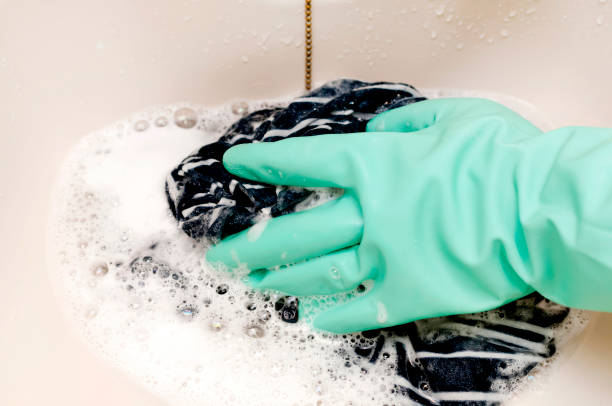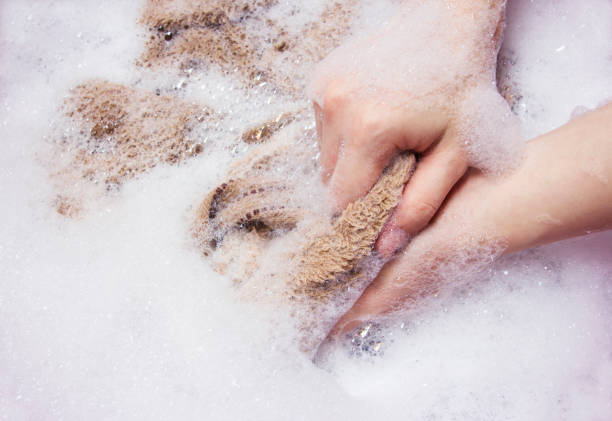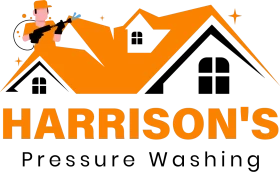In the world of property maintenance and exterior cleaning, Harrisons Pressure Washing has helped popularize soft washing as an effective and gentle alternative to traditional pressure washing. While high-pressure water cleaning is commonly used to eliminate dirt, mold, and algae from surfaces, soft washing provides a gentler alternative by combining low pressure with specialized cleaning solutions to restore the look of your home or business without causing damage.
But how exactly does soft washing work, and why is it becoming the preferred method for cleaning roofs, siding, decks, and even delicate surfaces? Surprisingly, soft washing techniques also tie into the broader context of home maintenance, because maintaining the integrity of your building envelope—especially by preventing water intrusion—is critical for prolonging the lifespan of your property.
Understanding Soft Washing: A Gentle Yet Effective Cleaning Method
Soft washing is fundamentally different from pressure washing. Traditional pressure washing blasts water at high pressure, often over 2,000 PSI, which can effectively remove dirt but may also strip paint, damage shingles, or wear away softer materials like wood or vinyl siding. In contrast, soft washing relies on low-pressure water spray—typically below 500 PSI—combined with environmentally safe, biodegradable cleaning solutions that target algae, mold, mildew, and other organic stains.
This approach not only cleans the surface but also sanitizes it, preventing the rapid return of stains and growth. The cleaning agents are designed to penetrate deep into porous surfaces to break down grime and organic buildup, while the gentle water pressure rinses everything away without the risk of physical damage.

How Soft Washing Works?
The soft washing process begins with a careful assessment of the surface to be cleaned. This step is important because different materials require different cleaning agents and application methods. For example, the type of solution used on asphalt shingles will differ from that used on stucco or concrete.
Once the right cleaning solution is prepared, it is applied using low-pressure pumps or specialized sprayers. These sprayers disperse the solution evenly over the surface, allowing it to dwell and act on organic contaminants such as algae, moss, and mold. The chemicals disrupt the cellular structure of these organisms, effectively killing them without harming the building materials or the surrounding environment.
Once the solution has had time to work, the surface is rinsed gently with low-pressure water to remove loosened dirt and any remaining chemicals. The gentle rinse preserves the surface integrity and avoids damage that could lead to costly repairs down the line.
Interestingly, soft washing also indirectly helps with home maintenance by preventing organic buildup that can trap moisture. This reduces the risk of water intrusion and related damage. Moisture trapped behind dirty or damaged surfaces can go unnoticed and eventually cause structural decay—problems that thorough cleaning with soft washing helps to avoid.
Image suggestion: Close-up of algae or mold on roof shingles before and after soft washing.
The Role of Soft Washing in Preventive Maintenance
Effective property maintenance is all about preventing damage before it occurs. While soft washing is not a method for detecting problems, it plays a vital supporting role in preserving your home’s exterior. By removing harmful organic growth such as algae, moss, and mildew, soft washing helps maintain the structural integrity of your siding, roofing, and other exterior surfaces.

How Moisture Retention Leads to Structural Damage
When mold or algae are allowed to grow unchecked, they hold moisture against surfaces for long periods. This moisture can accelerate the wear and tear of building materials, leading to cracks, gaps, and ultimately, water intrusion. If left untreated, this can result in interior water damage, mold growth inside the home, and weakened structural components. Regular soft washing eliminates this buildup, keeping your property dry, clean, and protected.

Key Benefits of Soft Washing
Soft washing offers numerous advantages that make it a preferred choice over traditional cleaning methods. Here are some of the key benefits:
- Gentle on Surfaces: Uses low pressure and specialized solutions to clean without damaging roofs, siding, or paint.
- Long-Lasting Clean: Effectively kills mold, algae, and mildew, preventing them from quickly returning.
- Eco-Friendly: Utilizes biodegradable cleaning agents that are safe for plants, pets, and the environment.
- Prevents Water Damage: Removes moisture-trapping organisms that can lead to structural deterioration.
- Cost-Effective: Reduces the frequency of cleanings and repairs by preserving surface integrity.
These benefits highlight why soft washing is not only effective for cleaning but also plays an important role in maintaining the health and safety of your property.
Why Soft Washing Is Becoming a Preferred Cleaning Method
Soft washing offers several benefits that make it attractive for both residential and commercial properties. First and foremost is its gentle nature. Unlike pressure washing, soft washing minimizes the risk of damaging roofing shingles, siding, paint, and even windows. This preserves the value of your property and extends the lifespan of exterior materials.
Secondly, soft washing delivers long-lasting results. Since it kills mold and algae at the root, surfaces stay cleaner for longer periods, reducing the frequency of cleanings and saving money over time.
Additionally, soft washing is environmentally friendly. The cleaning agents used are typically biodegradable and safer for plants, pets, and people. This contrasts with some pressure washing practices, which may require harsh chemicals or generate runoff that harms landscaping.
Lastly, soft washing supports home maintenance best practices by keeping surfaces free of moisture traps that contribute to deterioration.
Conclusion
Soft washing represents a smart evolution in exterior cleaning technology. By combining low-pressure water with effective cleaning solutions, it offers a safer, more thorough way to clean and protect your property’s surfaces. While soft washing itself does not detect leaks or damage, it plays a critical role in damage prevention by maintaining dry, clean exterior surfaces and reducing the risks that cause water intrusion.
Together with regular inspections and maintenance, soft washing can be part of a comprehensive strategy to safeguard your home or business from costly water damage.
Frequently Asked Questions
1. Is soft washing safe for all types of roofing materials?
Yes, soft washing is generally safe for asphalt shingles, tile, metal roofs, and more, as it uses low pressure and gentle cleaning agents tailored for each surface.
2. How frequently should I schedule soft washing for my property?
Typically, soft washing is recommended every 1 to 3 years, with timing influenced by your local climate and surrounding environmental factors.
3. Can soft washing remove old, stubborn stains?
Soft washing is very effective against organic stains like algae, mold, and mildew but may not remove certain types of paint or deep chemical stains.
4. How does soft washing impact overall property maintenance?
By keeping surfaces free from moisture-holding organisms, soft washing reduces the risk of water damage and helps maintain the structural integrity of your property.
5. Are the cleaning solutions used in soft washing harmful to the environment?
Most professional soft washing companies use biodegradable, eco-friendly solutions that minimize environmental impact.

